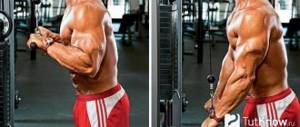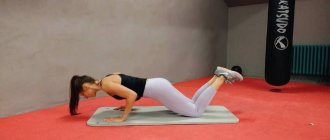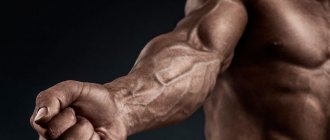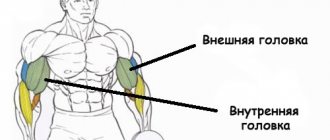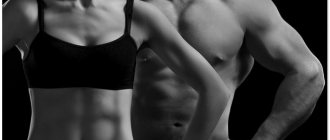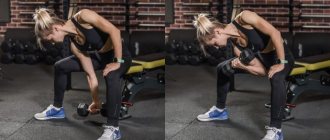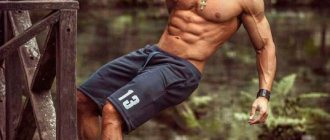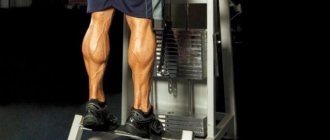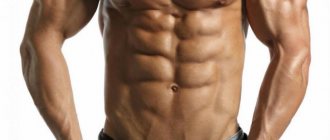Classification of main muscle groups
Each part of the body consists of a specific muscle group. Let's look at the main muscle groups and where they are located:
- The muscles of the head and neck allow a person to bite, chew and speak; pharynx - swallow; eyeball - see everything around 180 degrees.
- The large muscles of the neck stabilize, tilt and rotate the head.
- Many facial muscles provide facial expressions.
These include: the orbicularis oris, occipitofrontal and orbicularis oculi muscles. Chewable ones include: temporal, buccal.
The most important functions of the trunk muscles are to maintain the vertical position of the body, perform various movements, and ensure breathing.
- The sternocleidomastoid muscle runs from the temporal bone to the upper part of the sternum and collarbone.
- In the back area there are the following muscles: teres major, rhomboid, infraspinatus, lateralis, spinal extensors.
- Responsible for the movements of the arm and shoulder: deltoid, brachialis, coracobrachialis and trapezius muscles.
- The chest has the following composition: pectoralis major, serratus pectoralis, intercostal muscles.
- The arm muscles consist of biceps and triceps, forearm flexors, wrist extensors, and brachioradialis muscles.
- The hips and buttocks are equipped with a huge number of muscles, among which are: quadriceps, adductor magnus, sartorius, adductor longus, and pectineus muscle. This category includes: biceps femoris, semitendinosus, semimembranosus, iliopsoas, gluteal muscles.
- The abdomen consists of the rectus and external oblique muscles.
- The lower leg is equipped with the tibialis anterior, gastrocnemius and soleus muscles.
The main muscle groups are listed in the table below.
| Muscle groups | Kinds | Work performed |
| Heads | Chewable | Moving the jaw |
| Mimic | Reflects the mood and state of a person | |
| Necks | Maintains head balance, promotes head and neck movement, swallowing and speech | |
| Torso | Breasts | Changes the volume of the chest, provides movement of the arms, breathing |
| Abdominal muscles | Provide tilting and turning of the spine, breathing, bowel movements, urine excretion, and blood circulation through the veins | |
| Dorsal | Flexion of the spine, neck, upper limbs and chest | |
| Limbs | Arm muscles | Responsible for flexion and extension of the arm |
| Leg muscles | Flex and extend the hip joint and lower leg |
Head muscles
The muscles of the head include chewing and facial muscles.
Facial muscles are thin bundles of muscles. They are attached to the skull at one end, and woven into the skin of the face with the other (or both at once).
Their contraction shifts the skin, determining facial expressions and giving the appropriate facial expression.
Finished works on a similar topic
- Coursework Basic muscle groups 410 rub.
- Abstract Main muscle groups 270 rub.
- Test work Main muscle groups 230 rub.
Get completed work or advice from a specialist on your educational project Find out the cost
The largest facial muscles are the buccal, frontal, orbicularis oris and ocular muscles, supracranial, etc.
Four pairs of strong masticatory muscles begin on the bones of the skull from the lower edge of the arch of the zygomatic bone and are attached to the lower jaw (the masticatory muscles themselves, the temporal muscles). They raise and lower the lower jaw, thanks to them movements are made forward, backward and sideways in the process of grinding food.
Do you need proofreading or review of academic work? Ask a question to the teacher and get an answer in 15 minutes! Ask a Question
By shape
Each muscle depends directly on the lines of muscle fibers located relative to the tendon.
They are distinguished by shape:
- long;
- short;
- wide.
Long ones are placed in the arms and legs of a person. For convenience, this category is named after the end of the word: biceps, triceps, quadriceps. These include those that are formed by combining muscles of different origins, for example, pectoral or dorsal.
The short ones are distinguished by their relatively small size.
Workout for giant arms
SUPERSET 1
| 1. Close-grip triceps bench press 3 sets of 6-8 reps | |
| 2. Standing barbell curls 3 sets of 6-8 reps |
SUPERSET 2
| 3. Overhead dumbbell extension 3 sets of 8 reps | |
| 4. Bench curls with a barbell on a Scott bench 3 sets of 8 reps |
SUPERSET 3
| 5. Extension of one arm in a triceps block 3 sets of 8-10 repetitions | |
| 6. Standing one-arm curl 3 sets of 8-10 reps |
Types of muscle tissue
The main groups of human muscles are formed by bundles of elongated cells - fibers capable of contraction and relaxation. Muscle fibers consist of many parallel threads - myofibrils, and they are made of protein threads, myofilaments. The alternation of thin and thick myofilaments gives the fiber its characteristic transverse structure.
Among the main muscle groups, there are three types of muscle tissue:
- heart muscle;
- skeletal muscles;
- smooth muscle.
general information
Each muscle, even the smallest one, attached to the bones of the ear, is a separately functioning organ and is controlled by specific nerve endings. Depending on the classification, the number of muscles in the human body may vary - if small muscles are included in larger muscle complexes, then their number is 640.
If we count all muscle tissue (for example, individual cells of smooth muscle tissue) as muscles, then we can count about a billion muscles. Scientists have proposed classifying all types of muscle tissue and classifying cells into individual structures, and those, in turn, into complexes of structures.
Anatomically, muscles are divided not only by location in the body (masticatory, gluteal) and the direction of muscle fibers (directed straight, transversely), but also by the structure of the joints (single-joint muscles, two-joint muscles), as well as by the trajectory of movement (flexion and extension, supinators-pronators ) and taking into account the function they perform (agonists or antagonists).
There are 3 types of muscles in the human body:
- Skeletal muscles. Made up of thousands of small muscle fibers and attached to bones. Only skeletal muscles are subject to voluntary control.
- Smooth muscles. They regulate processes that are unconscious to humans: gastrointestinal peristalsis, inhalation and exhalation, and the functioning of internal organs. Their contractions are involuntary.
- Cardiac muscle. Involuntary, like smooth muscle. Reacts to electrical impulses and provides a heartbeat.
The amount of muscle mass determines the shape of the body. Normally, in a healthy person, muscle weight is up to 45% of body weight. In men, muscle tissue is better developed, formed faster and, accordingly, the percentage of muscles is greater than in women. The toughest people, weightlifters, have more than 60% muscle of their total body weight. This is approximately 40-60 kg of muscle.
Myocardium
The cardiac muscle, the myocardium, is the only muscle of the human heart. The heart pumps blood rhythmically, without stopping - about 7200 liters daily. When it contracts, blood is pushed into the arteries, and when it relaxes, it returns through the veins back to the heart. This muscle works automatically, without the influence of consciousness. It consists of many fibers - cardiomyocytes, which are connected into a single system.
The work of this muscle is controlled by a system of conductive muscle nodes. In one of the nodes there is a center of rhythmic self-excitation - a pacemaker. It is he who sets the rhythm of contractions, which changes under the influence of nervous and hormonal signals from other components of the body. As soon as the body is subjected to heavy load, the muscles require more oxygen. At the same time, the heart speeds up its rhythm, pumping more blood in a period of time.
Skeletal muscles
It represents the main muscle groups in the human body. These fibers have a characteristic structure and large sizes, therefore they are also called cross-striped. The work of this muscle tissue can be controlled by consciousness, and the muscles themselves are voluntary. The major groups of skeletal muscles are connected to the bones of the body and provide movement. Even when a person is in a stationary position, some muscles still work to maintain the adopted posture.
Their role is very important for the body. Associated with the skin, they provide facial expressions. Interestingly, 17 different muscles work when smiling. In addition, with the help of skeletal muscles, joints and bone joints are strengthened, and internal organs are protected from external influences. Taking just one step forward, a person uses 54 different muscles.
The most powerful
The gluteus maximus muscle (or GLM) is rightfully the largest in the human body.
In the lower segment of the body there are 3 gluteal muscles: small, medium and large. The latter is shaped like a diamond and is attached to the ilium, sacrum, and coccyx. It stretches from the side of the spine along the pelvis and attaches to the femur on the other side.
The gluteus is the largest muscle in the human body
The main function is hip extension during high loads. The BNM is responsible for the relative mobility of the femoral fascia to which it is attached. Fascia is a mobile extension of connective tissue from the femur.
The largest muscle in the human body is responsible for squatting, maintaining posture, walking, stair stepping, bending to the side and running.
The gluteus maximus muscle is a fleshy, dense mass of skeletal muscle. In athletes, the muscle reaches 2-3 cm in thickness. Consists of bundles of parallel-lying rough muscle fibers.
Interesting Facts:
- The gluteus maximus muscle is the most massive and largest muscle in the human body.
- The size of the muscle is characteristic of erect walkers in general, since it supports the torso in an upright position.
- It has great aesthetic significance as it lies above the smaller gluteal muscles and provides the shape of the buttocks.
Smooth muscle
All hollow organs are formed with the help of its fibers. These include blood vessels, the digestive tract, and the bladder. Such muscles contract and relax slowly, but can remain tense for a long time. Their work, like the heart muscle, is not controlled by consciousness. The stable activity of smooth muscle fibers ensures peristalsis - waves of contractions and relaxations that promote the movement of contents along all tubular organs. Smooth muscle is also present in other parts of the body. An example would be the eye. These muscles in the eye automatically change the curvature of the lens and the diameter of the pupil, controlling the sharpness and brightness of the perceived image.
Muscle structure
The main muscle groups are surrounded by elastic connective films, which are penetrated by nerves and blood vessels. This fibrous tissue extends beyond the muscles to form tendons or plates that connect it to the bones. This material is much stronger than muscle material. Skeletal muscle fibers are collected in bundles. The striated fiber is a huge cell that sometimes runs, for example, in the legs, along the entire muscle, 30-40 cm long. It is filled with many parallel contractile filaments, myofibrils. Each consists of alternating bundles of thick and thin protein filaments, the ends of which slightly overlap. When a muscle receives a nerve signal, it triggers chemical processes inside that cause thick fibers to slide relative to thin ones, penetrating into the spaces between them. As a result, the fibers contract, and ultimately the muscle. The muscle can only contract, that is, move the bone with which it is connected, only in one direction. Relaxing, it returns to its previous length due to external stretching. Therefore, the major human muscle groups are grouped together, forming opposing pairs that pull the same part of the body in opposite directions.
Language
The tongue is located in the oral cavity. The muscles make up the main part of the tongue and are divided into 2 groups: skeletal and intrinsic. Both groups include 4 muscles. The muscles of the tongue are symmetrically separated by a longitudinal fibrous septum. All muscles of the tongue are attached to either the hyoid or the mandibular bone.
Among the functions of the tongue are the functions of the papillae located on the mucous membrane of the organ, and the muscles themselves, which make up the bulk of the organ. There are 8 of them in total, each of which performs a specific function.
The skeletal muscles of the tongue include:
- Genioglossus. Provides downward and forward movement of the top of the organ.
- Hypoglossal. Participates in swallowing a bolus of food: it closes the larynx with the epiglottis. Responsible for backward and downward movements.
- Palatoglossus. Provides elevation of the root of the tongue.
- Styllingual. Movement of the tip of the tongue up and back.
All muscles of the second group change the shape of the tongue.
The proper-lingual muscles include:
- Upper longitudinal.
- Lower longitudinal.
- Transverse muscle.
- Vertical muscle.
The tongue is a muscular organ consisting primarily of striated muscles. The organ has the ability to change its shape and position. All muscles of the tongue begin with the occipital myotomas. Therefore, they are innervated only by the 7th pair of cranial nerves.
Interesting Facts:
- The structure of the tongue, called the muscular hydrostat, has been compared to an elephant's trunk.
- Most people believe that the tongue is considered the strongest muscle in the human body, but this is a misconception. The strongest muscle is the chewing muscle.
- Nick Stoeberl had the longest tongue. Its length was 10 cm.
Where does muscle strength come from?
When considering the work and structure of the main types and groups of muscles, it is necessary to know their source of energy. Muscle tissue receives the main energy for its contraction by burning glucose in its fibers with the help of oxygen to form water and carbon dioxide. This is how cellular respiration occurs, with glucose entering the body with food, and oxygen from the air during respiration. With the help of blood, these substances are transported to the muscles. During intensive work, muscles need much more energy and nutrition than at rest. As a result, breathing quickens and the heart beats faster, delivering more blood to the muscles. However, if the load is too great, the lungs and heart cannot cope with their task. And although glucose reserves in the body accumulate, without the required amount of oxygen, the muscles begin to receive energy by oxidizing glucose without its participation. Anaerobic respiration occurs. As a result, water and carbon dioxide are not formed, but lactic acid accumulates. With a high concentration of acid, the muscles become stiff, spasms and soreness appear in them. This is why extreme exercise often leads to aches throughout the body. After overload, the body needs rest to remove lactic acid and restore the level of glucose and hemoglobin in the blood.
Is it so important to understand muscles?
I have already said more than once that I will pay the closest attention to muscle issues (their physiology, biomechanics, etc.). Firstly, this is due to the fact that I’m tired of looking at a ton of Internet resources that cannot clearly summarize and correctly present all the information on muscles, their structure, etc.
The realities of today show that most resources (sometimes even authoritative ones) do not provide any specifics or detailed answers on one of the most important topics in building a fit body - muscles. Often, all their attempts come down to presenting the same type of muscle screens (“copy and paste” from each other) and more or less describing what is presented on them. I consider this unacceptable, and therefore decided to correct the situation.
In addition (secondly, so to speak), because muscles are, in fact, the source material on which we have to work, so it is important to study it inside and out, because 40% of success in achieving our goal depends on understanding these basics ( I still give 60% So, it is important not just to study (where, what muscle groups are located, what they are called and what function they perform) from dry, book images, but to understand the mechanisms of their work in each specific exercise, which muscle is involved more in the work, how to target exactly into the working muscle, creating maximum stress for it.
It is advisable, of course, to study all this interactively (including with the use of videos, interesting multimedia inserts), which, again, is implemented in this form in few places (if any). Therefore, I thought that it would be interesting for my readers to take a live look into the muscle work workshop and evaluate the whole process from the inside. For this purpose, foreign experience is being studied, and soon it will gradually begin to be translated into tangible video practice on the pages of the project.
Also, the reasons for my such a meticulous approach to the muscle atlas, the biomechanics of muscle groups, etc., include the fact that beginner (and not only) athletes and bodybuilders working out in gyms do not always have an idea of how to maximally load one or another muscle and perform the exercise 100% technically correct. Those. very often you can observe such a picture - a person works with any muscles, just not those for which the exercise is designed.
This leads to a huge amount of time being spent on:
- Identifying the error;
- Giving up the habit of doing things one way and not another;
- Retraining and execution is technically correct.
It’s better (financially included), of course, to do everything correctly from the beginning, but according to the dry “book-and-picture” theory, without looking at yourself from the outside and, most importantly, at the whole process from the inside, it’s very difficult to figure it out. Here is another reason for my long rant on this issue. Therefore, understanding the topic “ muscle anatomy” (and knowing what’s what) is important, and we will soon do this with a live (interactive) example.
Phew, I think I got the idea across. This is only an introductory part, what awaits us ahead of the article itself? I don't feel like myself anymore :). So, let's get to the point.
